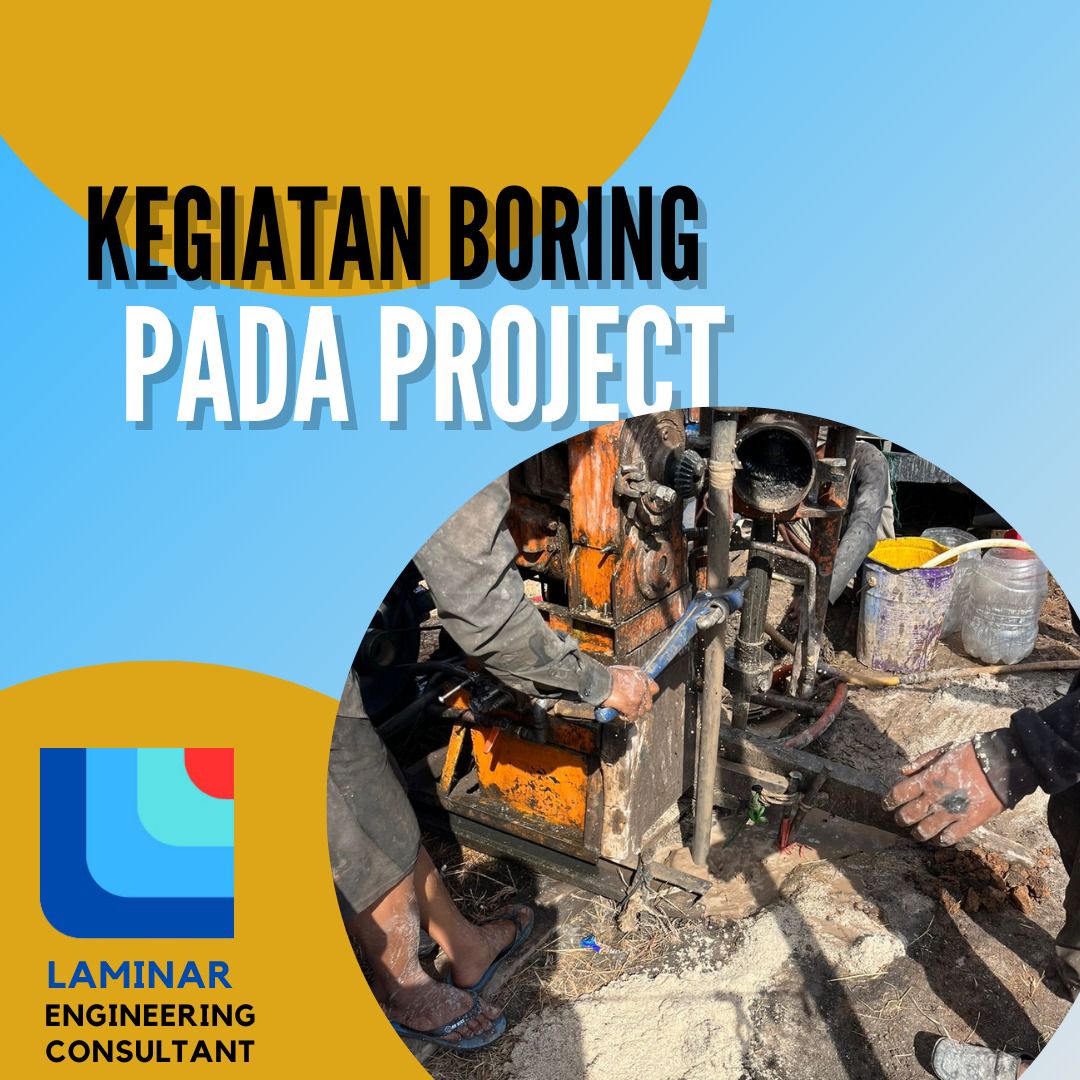In the world of construction, a strong foundation is the key to building a safe structure with a long duration. One important method used to ensure the stability of the foundation is the boring method, which is the process of drilling the soil to obtain samples from various depths. However, don’t get me wrong, boring here does not mean “boring” as in English, but refers to a very important technical process in construction. The following are the steps and advantages of the boring method in construction.
Boring Process
To obtain accurate information regarding soil conditions, the boring process is carried out through several stages as follows:
- Site Preparation
The drilling point is selected based on project needs and initial site studies, determining the drilling position to provide appropriate data for foundation design.
- Equipment Mobilization
Once the location is ready, the drilling tool or drilling rig is moved to the drilling point. This equipment is prepared for drilling to the specified depth.
- Boring Implementation
The drilling process is carried out carefully, considering that each layer of soil has different characteristics that will affect the drilling process.
- Sampling
Soil samples are taken at various depths according to the needs of the foundation design. These samples are then stored in special containers so that their characteristics are maintained until laboratory testing.
- Laboratory Testing
The samples obtained are tested to determine the soil’s bearing capacity and mechanical properties. This test is very important to determine the right type and design of the foundation.
- Reporting Results
After the testing process is complete, the results are compiled in the form of a report. This data is the main reference in designing a building foundation that is safe and in accordance with the soil conditions at the project site.
Advantages of the Boring Method
Why is the boring method so important? Here are some of its advantages:
- Soil Data Accuracy
Soil data obtained through the boring method provides accurate and in-depth information regarding soil characteristics. This information is very important for designing appropriate foundations, so that the risk of structural failure can be minimized.
- Foundation Safety and Quality
By knowing the bearing capacity and mechanical properties of the soil, engineers can design appropriate foundations, reducing the risk of damage or failure of the structure in the future.
Challenges in the Boring Method
Although it has many advantages, the boring method is not without challenges. Some of the obstacles that are commonly encountered include:
- Difficult Soil Conditions
Soil that is hard or contains a lot of water can slow down the drilling process, require special tools, or require extra handling.
- Site Access and Weather Factors
A project location that is difficult to reach or unfavorable weather can hinder the smooth running of the boring process. Good planning and adequate equipment are essential to overcome these obstacles.
As awareness of the importance of sustainability in construction increases, the boring method can also support this effort. Accurate data from drilling helps ensure that the foundation design is truly in accordance with the soil conditions, so that the use of materials and energy can be optimized. Thus, the risk of expensive and environmentally impactful foundation renovations or repairs can be avoided, supporting more sustainable development.
The boring method is an important process in the construction world that allows us to better understand the characteristics of the soil, so that we can design a safe, appropriate, and efficient foundation. By understanding the conditions of the land to be occupied, we can build structures that are durable and in line with the principles of sustainability. Remember, even though the term sounds boring, boring is one of the important processes for safe and sustainable construction.

